A living bean tent in the garden is a magical place to teach children about gardening, growing food, and harvesting. A bean tent creates shady solace from the sun while filling little bellies with nutrition. Whether the space is used for learning, play, or retreat, learn how to make a bean tent as a wonderful addition to a play garden space.
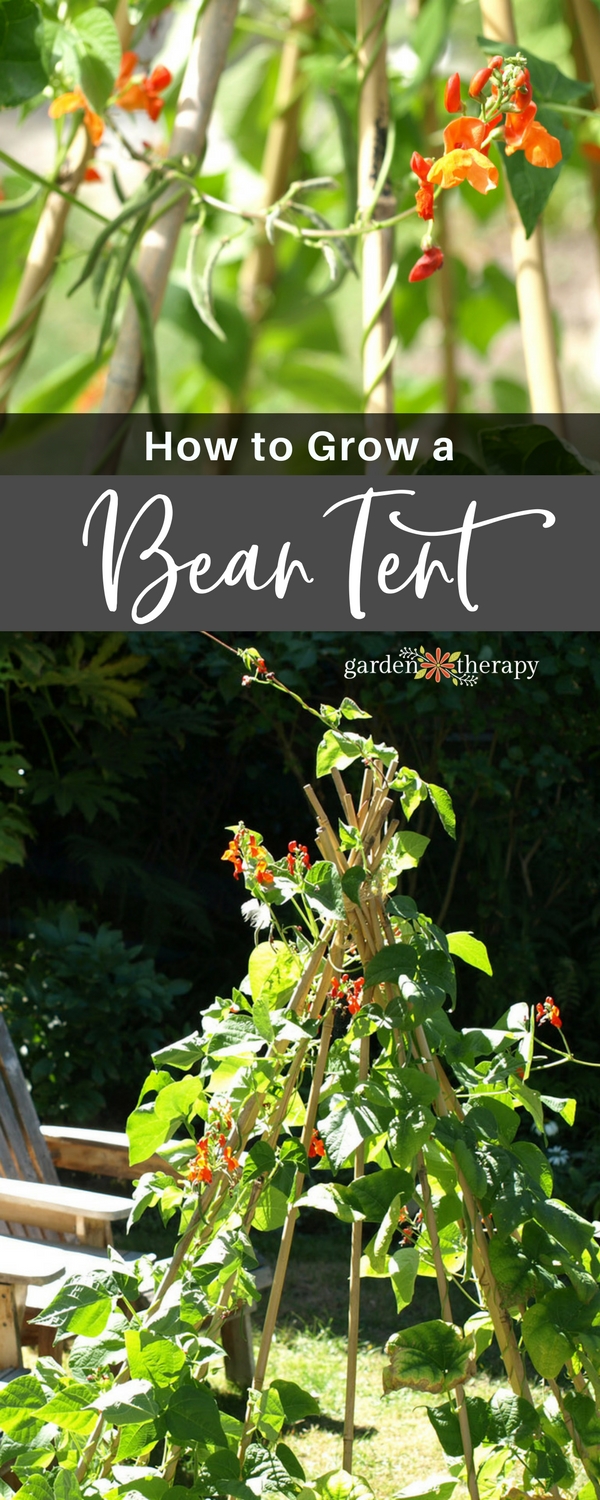
How to Grow a Whimsical Bean Tent
By Eleanor Reardon
My two-year-old daughter isn’t interested in green beans at the table. She doesn’t want them lightly steamed with butter and rock salt or sautéed with garlic. She won’t give them a second glance, whether boiled perfectly tender or fresh and crisp, but try to bring her in from the garden when there is still a bean to be picked from our front yard bean tent and it’s sure to end in tears.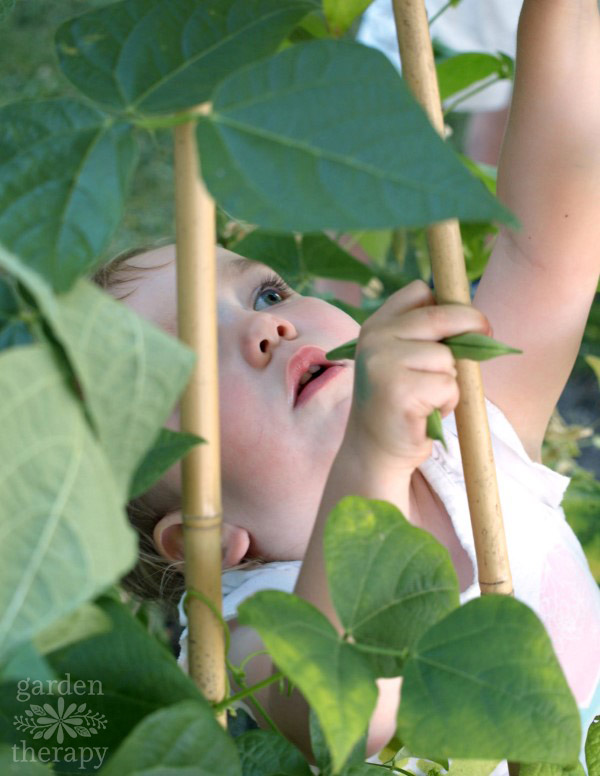
Beans are easy to grow and a wonderful starter plant for children. There is a reason that they are a first foray into agriculture for elementary students everywhere! Beans are tough, sprout quickly, and transplant well, making them an excellent learning tool in the home garden.
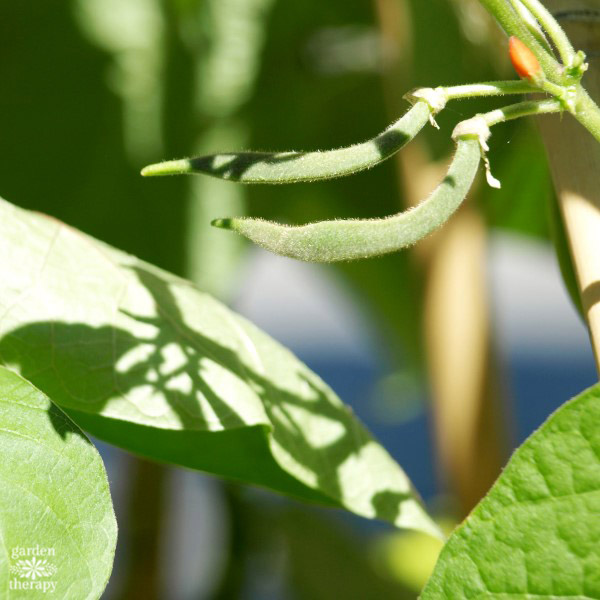
Early in the season you can start beans in a cold frame or greenhouse until the risk of frost is past, but if the nights are warm enough they can be successfully direct-sowed. As they grow toward the tent poles and wrap around and up they will resist the wind, building strength.
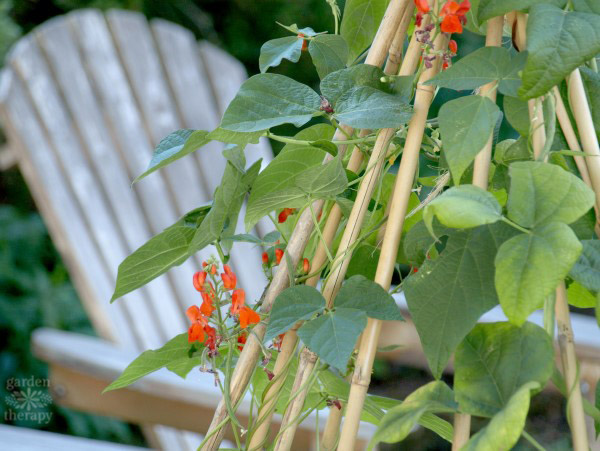
Materials
(for a tent 4 1/2’ in diameter, with a door 3’ at the base)
- 40 beans or bean shoots
- 12 x 8’ bamboo poles
- Soil
- Sisal twine
- Bricks or rocks

Make it!
We used a variety of beans and some peas to grow up the poles of the tent. All varieties are edible and grow well in this area. I particularly love the bright red flowers on the scarlet runner beans—they adorn the tent beautifully and attract bees and butterflies. I’d like to try sweet peas next year for variety of color, but we’ll likely forego the shell peas because the vines die quickly as the weather warms in summer.
Choose a sunny spot for your tent and decide which way the entrance will face. With our small child and no fence, the tent anchors the front garden and the door opens to the sitting area in front of the house. When she is older we may move the entrance, or even the whole tent, to give her a secluded getaway to read or dream or snack on green beans.
Mark out the area where the base of the tent will be planted. Drive the bamboo poles six to eight inches into the ground, approximately one foot apart. Angle them more upright than leaning to create height and stability. When all of the poles are in the ground, gather them together so that they cross each other four to six inches from the top. Wrap sisal twine over and under a couple of times, in different directions, before going around the outside of the poles several times tightly.
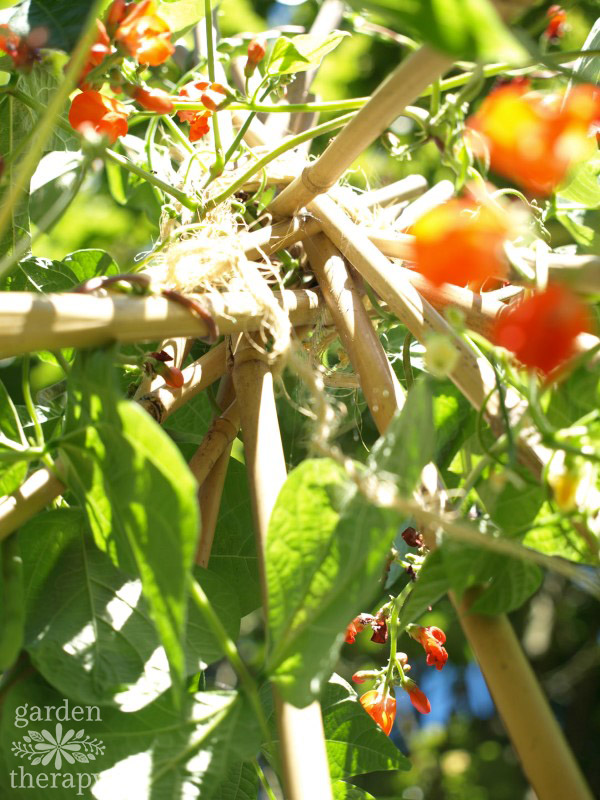
Pile garden soil at the base of the poles, keeping most of it on the outside of the tent, gently forming a mound that is six inches deep and at least eight inches wide.
You can even create a retaining wall on the outside with bricks or rocks, and form a trench all the way around at the apex of the mound. Plant your beans or shoots in the trench a few inches apart and give them a good soaking, then keep the soil damp. Careful watering will keep the loose soil from washing away; it will also keep the leaves dry, avoiding mold.
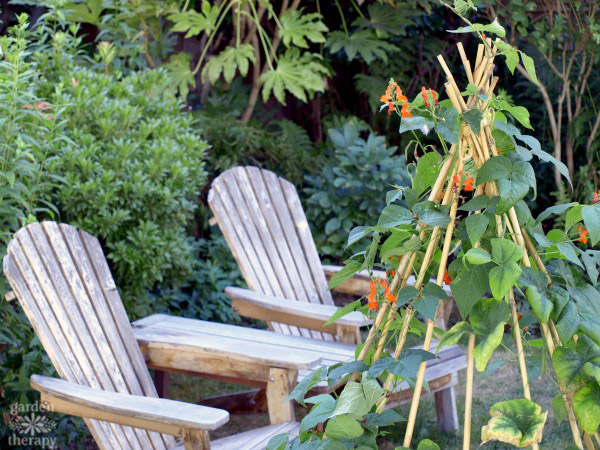
Happy picking!
About the Author
Eleanor Reardon
Originally from Halifax, Eleanor lives in Vancouver with her husband and small daughter. She is a photographer, weaver, printmaker, gardener… you could just say that she is happiest when she is making things.
Copyright: all photographs (c) Elenanor Reardon for Garden Therapy 2015



